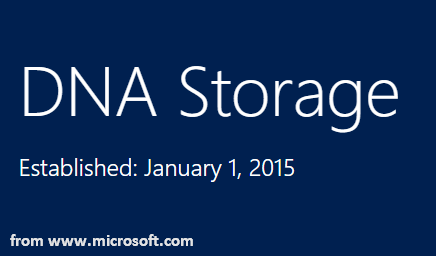In current society, there’s an outbreak of data; the information is much more than the traditional storage technology can handle. Therefore, the scientists are working hard to find a solution for fixing this. The DNA data storage is their new target because it is small in size and is able to cope with large amount of data easily.
What Is DNA Data Storage
To be honest, the DNA data storage is not a new idea emerges recently. Though it becomes a hot topic in the 21st century, it can date back to 1964-65 when Mikhail Samoilovich Neiman published his works discussing general considerations regarding the possibility of recording, storage, and retrieval of information on DNA molecules.
Specifically, the DNA digital data storage refers to the actions of encoding and decoding binary data to and from the synthesized DNA strands. It brings a new information-storage system to our life. (To manage data on current storage media, you’d better get help from MiniTool.)

Till now, the scientists have done test on DNA as data storage. The first system was created by Microsoft supported researchers to translate digital information into genetic code and retrieve it automatically.
DNA Storage Is Required in the Age of Data Explosion
In the year of 2018, people have done many things on Google:
- 88 million searches have been conducted in Google Chrome.
- 33 million videos have been watched on YouTube.
- 159,362,760 e-mails have been sent throughout the world.
- 49,000 photos have been shared on Instagram.
- Twitter has been used 473,000 times.
- …
Please read this post if your Google Chrome history is lost but you need it back:
Definitely, the number will continue to grow. It is estimated that about 1.7 megabytes of data will be generated per second per person all over the world by 2020 (assume that the world population reaches 7.8 billion). That is to say, about 418 zettabytes of data will be created in a single year, which requires 418 billion one-terabyte hard drives for data storage.
So, what will the future hard drive look like?
You can tell from these data that a better storage system is needed and a huge amount of energy is required to run the data centers. Therefore, the idea of DNA hard drive arises before things are getting severe over time. It is able to shrink a data center to the size of a few dice.
Why DNA Drive Is the Answer to Information Overload
DNA has an information-storage density several orders of magnitude higher than any other known storage technology.– says Victor Zhirnov, chief scientist of the Semiconductor Research Corporation.
Can you imagine that a movie can be made into DNA, being even smaller than a sugar cube? What’s more exacting, the DNA-based data storage could last for a very long time.
Click here if you find files disappeared from the external hard drive suddenly.
How DNA Data Storage Works
Consisting of the long chains of the nucleotides A, T, C and G, the DNA works great as the storage material of life information. In DNA digital data storage, the data can be stored in the order of nucleotides letter. That’s how DNA can become a new form of information technology. Data stored in DNA can be read (sequenced), written (synthesized) and copied easily.
Characteristics of DNA hard drives:
- One of the biggest features of DNA storage is that it owns incredible stability; this point can be testified by the complete genome sequencing of a fossil horse living over 500,000 years ago.
- Another obvious advantage of DNA drives is that not much energy is required to store data.
- As mentioned earlier, the storage density of DNA is super high. According to estimation, only a cube of DNA measuring about one meter on a side is able to meet the whole world’s current storage needs for a year.
The problem that still needs to be solved is the cost and speed (reading speed and writing speed).

User Comments :